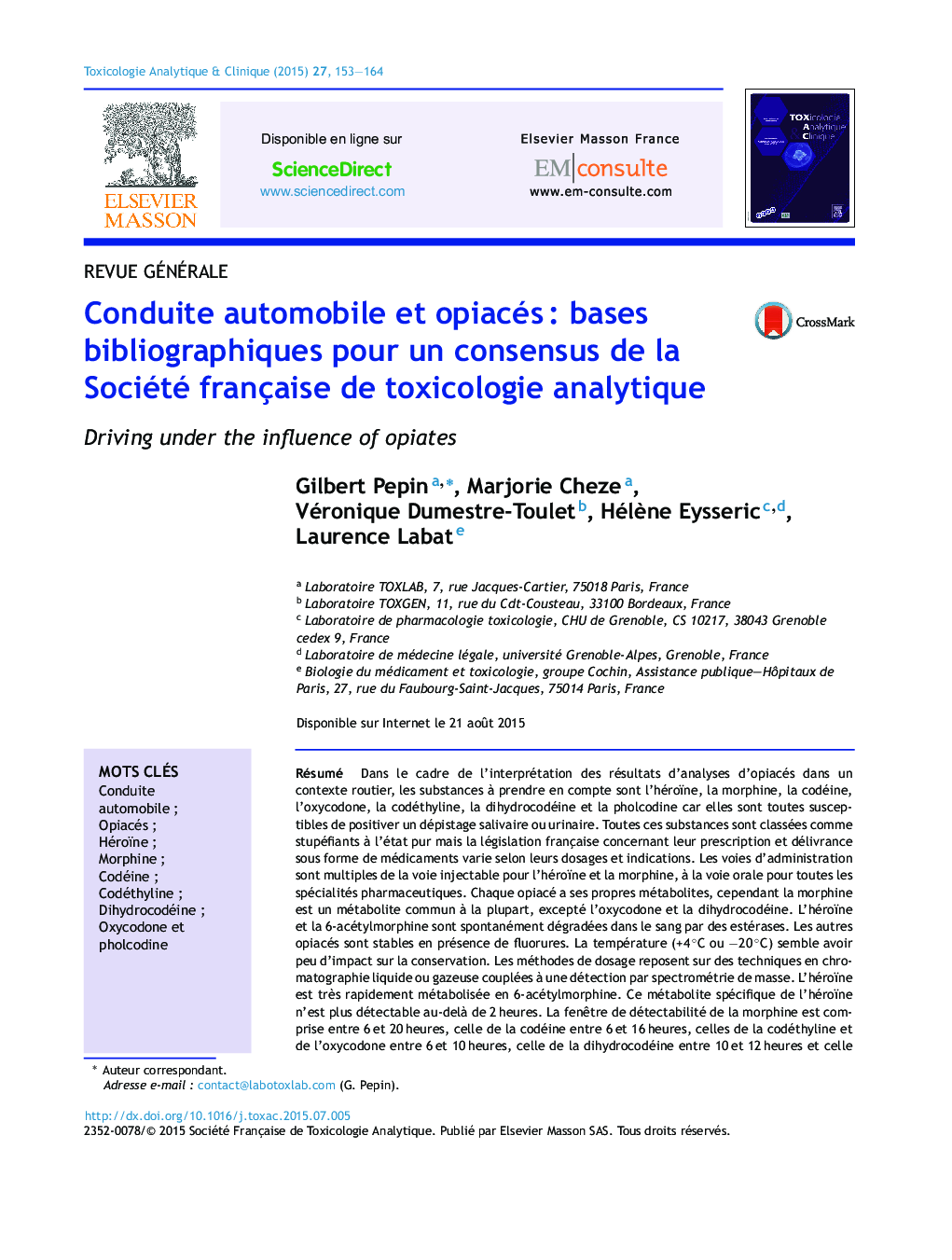| کد مقاله | کد نشریه | سال انتشار | مقاله انگلیسی | نسخه تمام متن |
|---|---|---|---|---|
| 107811 | 161822 | 2015 | 12 صفحه PDF | دانلود رایگان |
عنوان انگلیسی مقاله ISI
Conduite automobile et opiacés : bases bibliographiques pour un consensus de la Société française de toxicologie analytique
دانلود مقاله + سفارش ترجمه
دانلود مقاله ISI انگلیسی
رایگان برای ایرانیان
کلمات کلیدی
موضوعات مرتبط
علوم پزشکی و سلامت
پزشکی و دندانپزشکی
پزشکی قانونی
پیش نمایش صفحه اول مقاله

چکیده انگلیسی
In the context on driving under the influence of drugs, the list of the main opiates that could lead to a positive result by immunochemical screening tests are heroin, morphine, codeine, oxycodone, codethyline, dihydrocodeine and pholcodine. All these substances are classified as narcotics in their pure form, but the French legislation concerning their prescription and delivery in the form of medications varies according to their dosages and indications. Routes of administrations are multiple. It could be intravenous for heroin and morphine and oral route for other opiates and over-the-counter medications. Each opiates has its own metabolites, however morphine is a metabolite shared by all opiates, except oxycodone and dihydrocodeine. Heroin and 6-acetylmorphine are spontaneously degraded by esterase present in the blood. Opiates are stable with fluoride, and storage's temperature does not show significant impact on opiates stability between +4 °C and â20 °C. Methods for opiates identification and dosage are based on chromatography and mass spectrometry. Heroin is rapidly metabolized in 6-acetylmorphine. This metabolite, which is a positive proof of heroin use, is still detectable up to 2 hours. After administration, morphine can be detected up to 6-20 hours, codeine up to 6-16 hours, codethyline and oxycodone up to 6-10 hours, dihydrocodeine up to 10-12 hours, and pholcodine up to 48-72 hours. The French law requires a minimum detection limit for morphine at 20 μg/L in blood. However, the SFTA recommend a lower limit, and minimum quantification limit at 5 μg/L of blood for all opiates including 6-acetylmorphine. It is widely established that opiates impair driving ability by the result of depression on the central nervous system and in smooth muscle relaxation. However, their impact is correlated with the substance used (heroin > morphine > codeine = oxycodone > codethyline = dihydrocodeine > pholcodine). According to the scientific literature, we can propose a cut-off for impairment at 10 μg/L for morphine. No other impairment cut-off could be proposed at this time without more studies. Ratios between blood and saliva for opiates are unpredictable among individuals and thus, no correlation can be clearly established. However, the detection windows in blood and saliva are similar. Moreover, 6-acetylmorphine is more often detected in saliva than in blood.
ناشر
Database: Elsevier - ScienceDirect (ساینس دایرکت)
Journal: Toxicologie Analytique et Clinique - Volume 27, Issue 3, September 2015, Pages 153-164
Journal: Toxicologie Analytique et Clinique - Volume 27, Issue 3, September 2015, Pages 153-164
نویسندگان
Gilbert Pepin, Marjorie Cheze, Véronique Dumestre-Toulet, Hélène Eysseric, Laurence Labat,